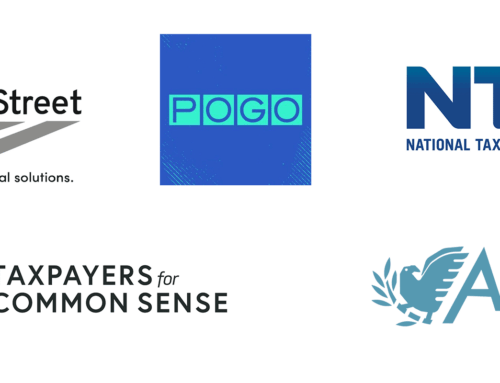Since at least the late 1990s, a popular budget bogeyman is occasionally trotted out on Capitol Hill as symptomatic of wasteful Pentagon spending: the U.S. contribution to NATO and other member nations’ lack thereof. Fortunately, facts don’t back this fave sound bite.
You could hear this during Congressional debates when the first round of NATO enlargement was proposed by the Clinton Administration. A popular question was how much it would “cost” the United States if the Czech Republic, Hungary, and Poland were admitted to the Alliance.
More recently, President Trump often declared that NATO members other than the United States didn’t pay their “fair share” of NATO costs or were somehow, “very far behind in their defense payments.”
The fact is NATO member countries pledge to meet certain thresholds in spending on their own defense which, by making each country stronger, indirectly contributes to the common defense of the Alliance. At the NATO Summit of 2014, each member agreed on a goal of spending 2% of Gross Domestic Product (GDP) on defense by 2024. Member nations further agreed to devote at least 20% of defense spending on major new equipment and associated Research and Development. In the Fiscal Year 2022 budget request, the Biden Administration noted that NATO members had, between 2014 and 2020, cumulatively increased defense spending by $190 billion.
As of 2020, the last year for which NATO has released statistics, eleven of the 30 member nations met the 2% of GDP goal. These nations are Estonia, France, Greece, Latvia, Lithuania, Norway, Poland, Romania, Slovak Republic, United Kingdom, and United States. And three more countries seem poised to meet the 2024 deadline: Croatia, Hungary, and Turkey. In the 2020 statistics, the United States spent 3.73% of GDP on our own defense. Greece was second, spending 2.68% of GDP on its defense. Estonia was third with 2.33%. The United Kingdom was fourth with 2.32%.
Of note, Germany spent 1.5% of GDP on its own defense in 2020 and didn’t appear prepared to significantly increase spending prior to 2024. Now, in apparent response to the Russian war against Ukraine, German Chancellor Olaf Scholz pledged 100 billion Euros for his country’s armed forces in 2022, almost doubling the level spent in 2020 (51.4 billion Euros).
NATO members also make direct cash payments for what are referred to as “Common Funding Arrangements.” These payments are a more accurate reflection of the “cost” of being a member of NATO and are based on the Gross National Income (GNI) of each member. The payments support NATO’s staff and operating costs of alliance headquarters, NATO’s military budget (the costs of the alliance’s integrated command structure), and the NATO Security Investment Program, helping improve military capabilities of newer member nations.
These annual contributions from alliance members don’t cover the costs of NATO training exercises or military operations. When these costs arise, they are generally funded by participating individual nations.
The total cost for the Common Funding Arrangements in 2020 totaled 2.46 billion Euros — roughly $2.76 billion. The contributions from the United States, based on GNI, account for roughly 16.3% of that total or roughly $442 million. Germany is the other largest contributor to the Common Funding Arrangement, matching the United States and covering roughly 16.3% of total costs. The United Kingdom contributes 11.3%. France contributes 10.5%. Italy contributes 8.8% and Canada 6.9%.
All these statistics don’t give us a clear answer to the question: How much money does the United States spend on NATO? We can point to the “Defense Burdensharing/NATO” line in the Fiscal Year 2022 President’s budget request. That number was $640 million and appears to include both the U.S. portion of the Common Funding Arrangements, plus another $205 million in military construction. But a complete answer is much more difficult to winkle out. What are the costs of NATO training exercises? How about military operations in Europe in response to Russian attacks in Ukraine? Annual contributions to NATO don’t cover these exercises or contingencies.
And then there’s the so-called European Deterrence Initiative, (EDI) requested at just under $3.7 billion in FY22. This is a program to, “[c]ontinue to enhance the capability and readiness of U.S. Forces, NATO Allies, and regional partners of the U.S. for a faster response to any aggression in Europe and transnational threats by a regional adversary against the sovereign territory of NATO nations.” It’s hard to argue that this program isn’t an additional “cost” to NATO membership, although it isn’t required under any NATO agreement. It’s equally difficult to parse exactly what portion of this program benefits the United States alone, rather than our allies.
We’re budget watchdogs. We’ve spent more than a quarter of a century pointing out wasteful federal spending, including at the Pentagon. We know what waste is. But in a Pentagon budget request of roughly $727 billion – and a national security topline of just under $770 billion – direct NATO burdensharing costs of $640 million don’t seem out of line. We’ll keep a suspicious eye on budget dodges like EDI (especially when it was part of the old Overseas Contingency Operation (OCO) slush fund) and keep publicizing the details.
And we’ll be watching for trends in the Biden Administration’s Fiscal Year 2023 budget request when it comes out. Call us clairvoyants, but we’re going to take a bet that the trends will all be upward. Anybody want to take the other side of that bet?
We didn’t think so.










